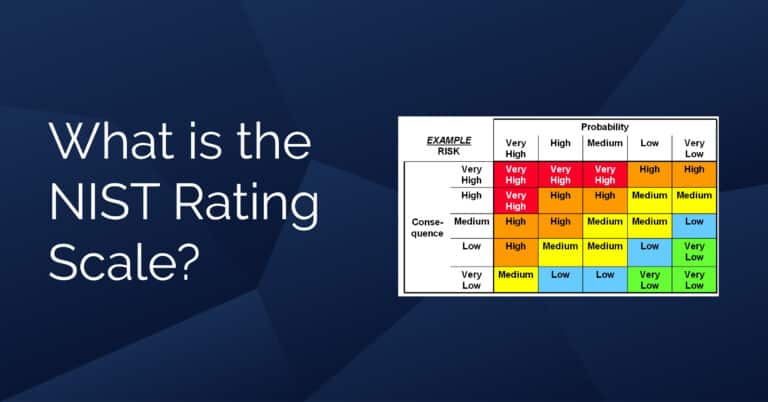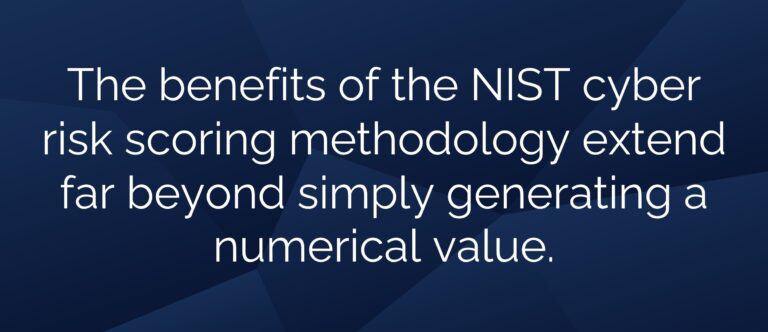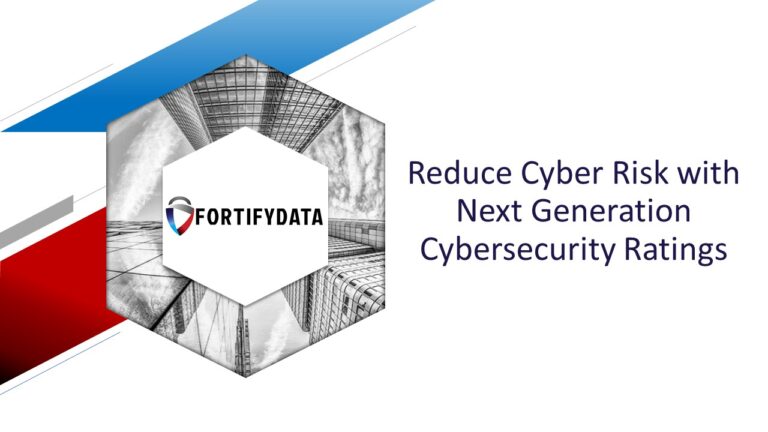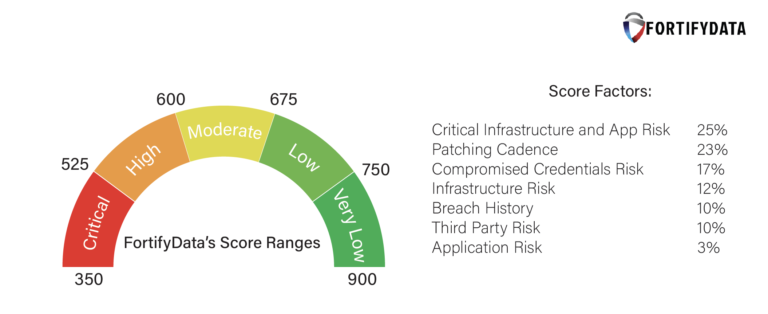
What is the NIST Rating Scale? In the realm of cybersecurity, understanding various security ratings is crucial for organizations…
"This is an excellent starting point for any organization that wants to get serious about their cyber risk management. The system has the capability to grow as you become more sophisticated in your use"
IT Director
Services Industry
In the ever-evolving landscape of cyber security, staying ahead of threats and vulnerabilities is paramount. Enter the National Institute of Standards and Technology (NIST) cyber risk score, a powerful tool that helps organizations assess their security posture and prioritize areas for improvement using a NIST rating scale. But what exactly is the NIST cyber risk score, and how can it benefit your organization?
Before diving into the specifics of the NIST cyber risk score, it’s helpful to understand the broader context of cyber security rating scales, many incorporated in the analysis that security ratings vendors provide. These scales provide a standardized framework for evaluating an organization’s security posture, often using a tiered system to represent varying degrees of risk. The NIST Cybersecurity Framework, for instance, employs a five-level scale ranging from “Identify” to “Protect” to “Detect” to “Respond” and “Recover,” offering a comprehensive roadmap for building and maintaining a robust security posture.
The NIST cyber risk scoring itself is not a singular metric, but rather a methodology for assessing and quantifying risk based on the principles outlined in the NIST Cybersecurity Framework. This methodology involves identifying relevant security controls, assigning weights to each control (ranges from 1 to 10) based on its significance to overall security, and then evaluating the effectiveness of those controls within your organization. This can be helpful for NIST security and privacy assessment and authorization (A&A) processes, that many Federal and State agencies rely on. This can be translated into the NIST risk scoring matrix and the resulting score provides a snapshot of your risk posture, highlighting areas where you excel and areas requiring attention.
The NIST Risk Assessment Framework provides the foundation for calculating the NIST cyber risk score. This framework outlines a structured approach for identifying, analyzing, and evaluating security risks, ensuring a comprehensive and standardized assessment process. By leveraging this framework, you can gain a deeper understanding of your specific vulnerabilities and tailor your security strategy accordingly.

The benefits of the NIST cyber risk scoring methodology extend far beyond simply generating a numerical value. By employing this approach, you can:
Additional Resources
Cybersecurity rating scale explained
What are security ratings used for?
How are security ratings created?
What is a good cybersecurity rating?
How do you improve your security rating?
Is it easy to switch security ratings providers?
Why is my security rating wrong?
What Kind of Company is BitSight?
What is the Highest Security Rating?
Select What are the 5 C’s of Cybersecurity?
What is the difference between SecurityScorecard and BitSight?
What is the difference between BitSight and RiskIQ?
What is the difference between SecurityScorecard and CyberGRX?
The Evolution of Cybersecurity Ratings and How They Can Boost Risk Visibility

The NIST risk assessment framework is a comprehensive framework that helps organizations categorize and manage their cybersecurity risks and helps categorize the impact levels of those risks to the organization. These impact levels are taken into consideration of cyber security rating scales with the respective impact levels affecting cyber risk scores accordingly. Within this framework, risks are categorized into three primary impact levels: Low, Moderate, and High, based on the potential impact on an organization’s operations, assets, or individuals should a cybersecurity event occur.
Each of these levels requires a different approach to risk management. The NIST risk assessment framework provides detailed guidelines on how organizations should manage their cybersecurity risks at each level. By understanding and applying the principles of the NIST risk levels, organizations can better prepare for, and respond to, cybersecurity events, ensuring the continuity and integrity of their operations.
The NIST risk assessment framework defines five core elements of maturity levels, each representing a different degree of security maturity. These levels are:
By mapping your NIST cyber risk score to these levels, you gain valuable insight into your current security posture and can prioritize efforts accordingly. For instance, a score indicating a high risk in the “Detect” category would prompt you to invest in stronger intrusion detection and monitoring systems.

Source: Charles IT Blog
Understanding the NIST cyber risk score is just the first step. To truly benefit from this powerful tool, you must take action. Here are some next steps:
By embracing the NIST cyber risk score as a valuable asset in your security arsenal, you can gain a clear understanding of your risks, how your organization’s risk rank on a cybersecurity rating scale, prioritize your investments, and ultimately build a more resilient organization. Remember, cybersecurity is a continuous journey, and the NIST cyber risk score or scores provided by security ratings services can be guides along the way.
Ready to take control of your cybersecurity posture? Contact us today to learn more about how we can help you understand your cybersecurity posture with an automated cyber threat assessment which can be used in a NIST based assessment to understand how your organization is scored against NIST risk assessment and cybersecurity posture.



| Cookie | Duration | Description |
|---|---|---|
| cookielawinfo-checkbox-analytics | 11 months | This cookie is set by GDPR Cookie Consent plugin. The cookie is used to store the user consent for the cookies in the category "Analytics". |
| cookielawinfo-checkbox-functional | 11 months | The cookie is set by GDPR cookie consent to record the user consent for the cookies in the category "Functional". |
| cookielawinfo-checkbox-necessary | 11 months | This cookie is set by GDPR Cookie Consent plugin. The cookies is used to store the user consent for the cookies in the category "Necessary". |
| cookielawinfo-checkbox-others | 11 months | This cookie is set by GDPR Cookie Consent plugin. The cookie is used to store the user consent for the cookies in the category "Other. |
| cookielawinfo-checkbox-performance | 11 months | This cookie is set by GDPR Cookie Consent plugin. The cookie is used to store the user consent for the cookies in the category "Performance". |
| viewed_cookie_policy | 11 months | The cookie is set by the GDPR Cookie Consent plugin and is used to store whether or not user has consented to the use of cookies. It does not store any personal data. |